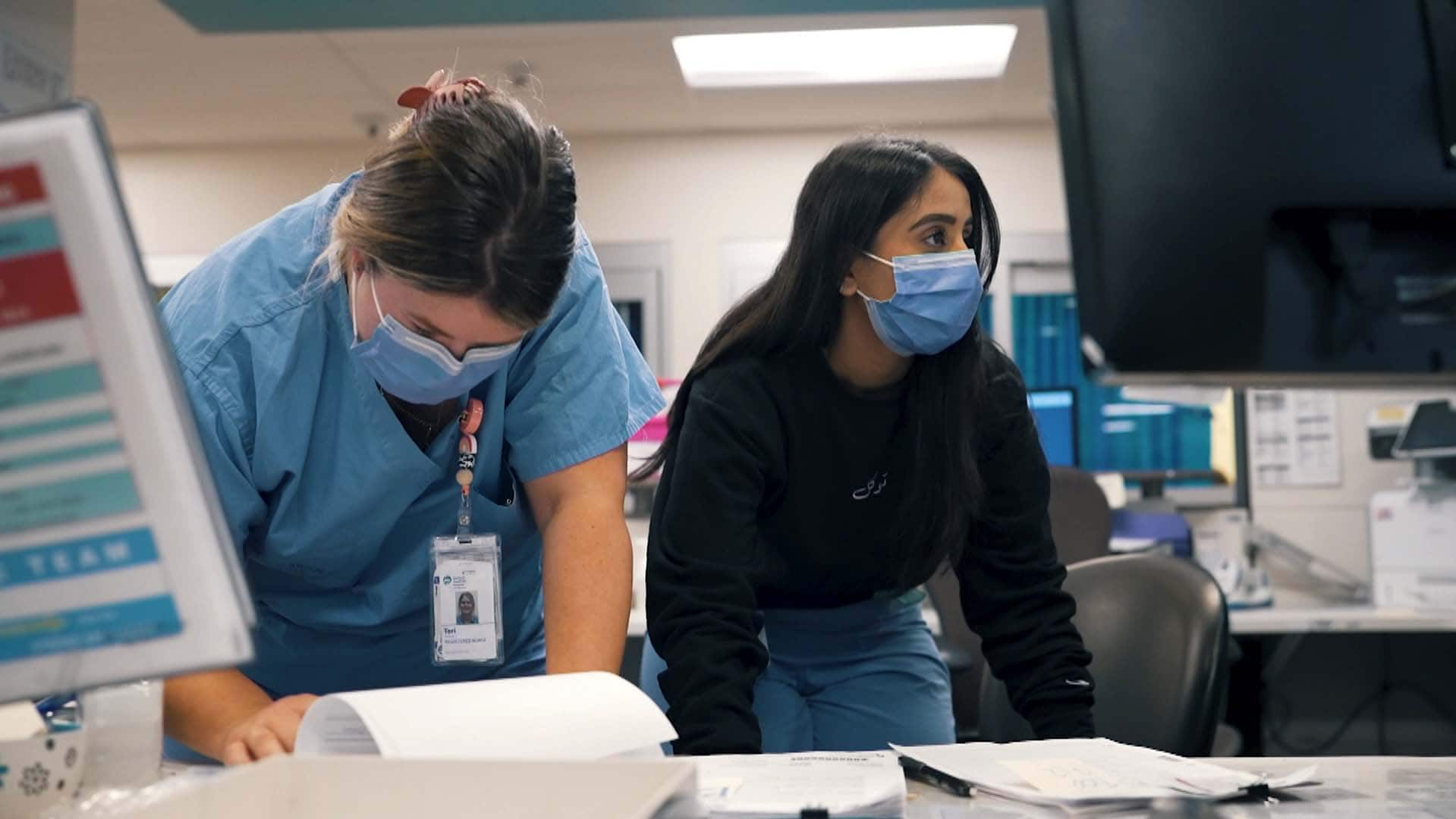The Current24:35Are full-body MRIs worth the money?
After a bout of prostate cancer, Don Garnier wanted to take a more proactive approach to his health. That’s why he went out of his way to pay $2,500 for a full-body MRI scan at a private Vancouver clinic called Prenuvo.
“We live in a world now where getting medical care can be a bit of a challenge. So the more you are on top of your health, the better,” he told The Current.
Garnier said the scan results took five days to come in and were unremarkable — which was good news. He said the nurse clinicians there went through the results with him in detail.
He feels it was worth the money for his peace of mind — and many people share that view.
Although full-body MRI scans — using Magnetic Resonance Imaging technology to scan your body for anything abnormal — are not new, they’ve recently soared in popularity due to celebrity endorsements from the likes of Kim Kardashian.
But as more private clinics start offering them, some doctors are telling patients to think twice before they slide into the machine.
“I think the general view of the medical establishment is that, you know, these things don’t have a lot of evidence and we should be very cautious before we advise people to get something like this,” Dr. Dhruv Khullar, a physician and a New Yorker writer, told The Current‘s Matt Galloway.
Peace of mind or anxiety-inducing?
Khullar says companies offering full-body MRIs “promise a sense that you’re in charge of your health care” and a peace of mind.
But he claims the narrative is only partially true, and that the scans can be a hassle for patients too.
“People may experience anxiety,” he said. “They may receive false positive test results. They may be diagnosed with conditions that might never end up hurting them.”
Khullar understands these anxieties first-hand because he got a full-body MRI — and he said his own experience speaks to some of the challenges with them.
Everything in his results looked OK, he said. But, there was a one-centimetre lesion in his prostate, and it wasn’t clear whether it was cancerous.

“These are sometimes called incidentalomas,” he said. “These are kind of asymptomatic abnormalities that are found incidentally and they generate more questions than answers.”
Khullar needs a follow-up blood test, and he’ll have to get a follow-up, dedicated prostate MRI to get a clearer answer.
“I’m still going to have to get a follow-up, dedicated prostate MRI to really figure out what’s going on there,” he added.
Khullar said his sense is that the lesion won’t hurt him. But now that he knows about it, he feels like he’s had to change his identity from someone who was healthy to someone who is a patient.
“Now, instead of assuming that I’m healthy … I know that there’s something inside me and I need continued tests to kind of prove to myself and to my loved ones that I am, in fact, healthy,” he said.
Turtles, birds and rabbits
According to Khullar, it’s important for screening tests to be targeted for certain people at certain ages at certain points in life “because the likelihood of finding something that you can actually intervene on and change the trajectory of someone’s life in a positive way is relatively high.”
But looking for everything in the body, or trying to, can be a “a recipe for having a tremendous number of false positives and potentially overdiagnosis,” he said.
You do the screening, you find the problem and you can intervene on it in a way that would be helpful-Dr. Dhruv Khullar, physician and New Yorker writer
Take cancers, which full-body MRIs can reveal. Khullar says cancers can be described as turtles, birds and rabbits in a barnyard, with screening and testing acting as the fence that keeps them from escaping.
The turtles, like some prostate and thyroid cancers, move so slowly that they’re never going to make it out of the barn, “so the screening doesn’t really help you,” Khullar said. “In fact, you find it and you may end up with unnecessary biopsies or other tests.”

The birds, on the other hand, are very aggressive cancers that may pick up at some stage, but there are no current interventions that will help patients, so the fence won’t keep them from flying away.
Then there are the rabbits, which are some breast and colon cancers. According to Khullar, these are the cancers that can be fenced in with targeted screening.
“You do the screening, you find the problem and you can intervene on it in a way that would be helpful,” he said.
“So thinking about tumours in terms of turtles, birds and rabbits illustrates why screening tests may not be helpful in every type of cancer and why we need to be judicious about their use.”
Pressure on public health
Some doctors are also concerned about the additional pressure false positives or benign issues could put on Canada’s health-care system.
Dr. Ania Kielar, president of Canadian Association of Radiologists, says radiology is the keyhole into chemotherapy and surgery. Without a diagnosis from radiology, people can’t get the treatment they need.
Yet, Canada is currently experiencing a huge shortage of CT and MRI technologists — in the thousands, according to Kielar. That, as well as a shortage of modern equipment, is leading to long wait times for public health patients who need imaging, she said.
“On average in Canada, people are waiting up to 100 days for an MRI, whereas most of the guidelines say that a non-urgent MRI should be less than 28 days,” she told Galloway. “So we’re waiting three times longer than we should.”
A union representing Ontario health-care workers has released survey data highlighting the stress, exhaustion and burnout experienced by hospital workers — with many considering a new career path. The union is calling for more provincial funding to ease the worsening staffing crisis.
According to Kielar, if the companies offering full-body MRIs do find something incidental, “the majority of times these people who are healthy people and are now patients, end up coming into our publicly funded health care system in Canada,” she said.
“And because we have such scarce resources, we don’t have the capacity right now to take on a bolus of people who have non-clinically significant incidental findings, but kind of need them worked out because they’ve now been found.”
In a statement to The Current, Prenuvo CEO Andrew Lacy pushed back on the claim that private clinics take away resources from public health care and contribute to a burned-out system.
“We believe that our health-care system is burnt out because treating cancer and disease late is horribly inefficient and leads to much worse patient outcomes,” he said.
“We hope that the approach that Prenuvo is championing will one day be part of standard of care in a transformed health system based around preventative precision medicine.”
Lacking data
Khullar doesn’t deny that some patients, like Garnier, have positive experiences with full-body MRIs. The overarching question is how many people need to be scanned for a case such as Garnier’s to be found.
It’s a question that doesn’t have an answer at the moment, according to Khullar. That may be why no professional medical society currently recommends full-body MRIs as as a preventative screening tool, nor are the scans covered by insurance.
“The reason for that is that there’s no real evidence that they’re going to help you,” he said. “So insurers, government payers, they’re not going to cover these things.”
Canada’s health-care system will need to navigate some major obstacles in 2024, from critical staffing shortages to dangerous pathogens to soaring Ozempic demand. CBC’s Christine Birak and Lauren Pelley get you up to speed on four big stories to watch in the year ahead.
At the moment, CEO Lacy says Prenuvo is collecting data about the efficacy of full-body MRIs — “and, as this is ‘long-term data,’ it takes time.”
However, the company currently is relying on “14 years of clinical practice performing these examinations” and making many early diagnoses to stand by their efficacy, he said.
Produced by Amanda Grant and Emma Posca. This story is the first instalment of The Current’s new series Well Founded, which digs into the wellness industry and how to make sense of all the pitches on how to be a better you.





